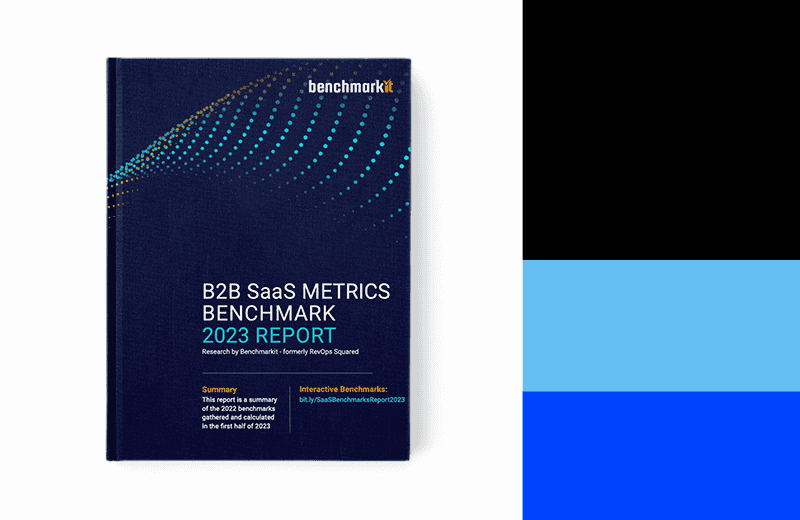Is it just me, or is it starting to feel a little tight in here?
Everyone is starting to feel the squeeze of the market—especially those in the tech space. Seasoned industry vets may know what their next move should be, but navigating a changing market (especially one in a downturn) is an obstacle for any SaaS founder.
So far, we’ve seen a slowdown in the venture market due to the drop in the stock market, inflation, an increase in interest rates, and a number of other issues. According to Crunchbase, valuations are declining, funding rounds are slowing, and some tech companies are freezing hiring or laying off employees to boost profits. So far this year, only 42 companies have priced IPO offerings. That is on pace to total less than half of last year’s 399 IPOs.
With the current market looking less than optimistic, how should you plot your next move? In this article, we’ll help you determine the next best step for your business and provide guidance on whether you should raise, sell, merge, or scale your SaaS.
Option 1: Raising capital
Despite talks of a recession and a slowdown in VC funding, now might be the best time to raise your next round and pursue aggressive growth.
Many Series B companies are taking the necessary steps to pursue aggressive growth goals because it’s at this stage that a startup often has proven market viability and is poised to scale. For example, 1,200 unique startups raised funding at Series B in 2021—about a third more than in each prior year since 2017. The amounts were also larger, more than doubling from $25.4 billion in 2020 to $55.9 billion in 2021.
While the funding blitz of the past year is now over, there’s still capital to burn, investors to report back to, and growth goals to hit, meaning some VC-backed companies are still scaling like it’s business as usual.
However, not all companies are fortunate enough to be flushed with cash from previous funding rounds. Rising inflation and a weak stock market are causing investors to be more careful with their financing, and without a plan to manage your cash runway effectively, you’re putting both yourself and your company at risk.
So what should you do if you’re strapped for cash and have your sights set on venture capital? The following questions will help you determine whether or not you’re ready to dive into the VC pool.
1. Do you have a clear growth strategy?
What is your path to profitability? Is there market demand for your product? Do you have a competitive market analysis available? Without a clear growth trajectory laid out in front of you, you’ll be burning cash with no end goal in sight. In this case, you may not be prepared to take on a round of venture capital.
2. How do you plan to use your next funding round?
Pinpoint areas within the company that need funding to accelerate and sustain growth. Before reaching out to investors, you should have a clear idea of how a capital injection will be used to maintain or develop different pieces of your organization, whether it’s product, leadership, sales and marketing, or research and development.
Option 2: Selling the business
After last year’s bull market and optimistic VC landscape, many late-stage companies are sitting on top of a pile of capital, and when you take into account that several companies’ valuations are falling, it puts later-stage companies in a position to make lucrative acquisition offers. In short, buyers are hungry to take on new businesses, and, for SaaS founders, this means that it could be an opportune time to make an exit.
Option 3: Mergers and acquisitions
Instead of selling the business or raising another funding round, a merger or acquisition of another company could be a strategic next step in your growth journey. The decision to merge with or acquire a competitor is usually made for one of the following reasons:
- Business performance tends to increase, and across-the-board costs tend to drop because each company leverages the other’s strengths. A merger or acquisition can be used to flesh out product offerings, reach new market segments, or take advantage of market opportunities that require the capabilities of a partner company to capitalize on.
- The acquirer gets an opportunity to grow market share without doing the heavy lifting of growing and scaling an existing business.
- The acquirer can eliminate future competition and gain a larger share of their existing market and expand their total addressable market (TAM).
If your company leadership can identify these opportunities and agree to move forward, a strategic M&A deal could create ample business opportunities in the future.
Option 4: Scaling your SaaS
What if none of the above seem like viable (or attractive) options?
If you’re determined to stay the course without selling, acquiring, or raising capital, you may want to focus on scaling your SaaS. Here are some actionable steps you can take to pursue growth without burning through your capital safety net.
Reevaluate your billing and pricing models
Pricing is a blind spot in many B2B SaaS companies where lead generation and customer renewals are seen as the MVPs of revenue generation. The thing is, capturing leads and maintaining strong customer relationships isn’t cheap. Experimenting with different pricing models, however, diversifies your company’s revenue generation and requires no additional investment of your organization’s time or money. It just works.
In OpenView’s Expansion SaaS Benchmarks study, they found that 98% of companies’ pricing changes had either a positive or neutral impact on their growth. When the numbers look this good, it’s a clear sign that SaaS companies should review and reiterate their pricing on a regular basis.
Reconsider your GTM strategy
At first glance, product- and sales-led initiatives seem like opposite strategies, but the reality is neither exists in a vacuum. In most cases, the best GTM strategy includes a mix of the two. By taking a hybrid approach, you get the benefits of product-led growth—scalability and faster client activation—while directing your sales team’s effort toward nurturing relationships with enterprise customers.
By expanding your current GTM strategy, you can create demand across market stages and diversify your company’s revenue without making radical changes to your business activities, raising capital, or selling your business to a competitor.
Consolidate your fintech stack for savings and efficiency
If your goal is to decrease your burn rate or extend your cash runway, making a simple investment in your current tech stack could save you a heap of time and money.
For many growth-stage SaaS companies, trying to plan and manage your financial roadmap is near impossible when all you have is a spreadsheet and a general ledger to keep the books balanced. As an alternative, you may also consider switching to an ERP. However, between the huge price tag, long implementation times, and the current market outlook, now might not be the time to make such an investment.
Right now, SaaS founders need to stay organized and agile until the bear market lets up. By introducing a dedicated revenue management platform that keeps data flowing between your spreadsheets, GL, and other financial tools, you can maintain a lean operation and ensure financial integrity at the same time.
Navigating the market downturn
Want personalized guidance on plotting the next step in your company’s growth journey?
We’ve teamed up with Todd Gardner of SaaS Advisors to create this Equity Calculator. This calculator is designed to help SaaS founders and relevant shareholders decide if they should sell, raise capital, absorb dilution, grow ARR, or sell at a later date.
You can access the full Equity Calculator here.




